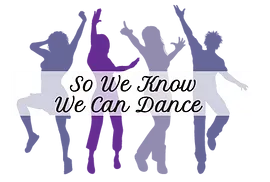The Studio
So We Know We Can Dance
A Feldenkrais® guided dance experience.
he Feldenkrais Method® is a movement re-education method developed by Dr. Moshe Feldenkrais. It uses gentle movements to help students become aware of their own habitual movement patterns and help them find different ways of moving.
All levels & abilities are welcome to move gently and get to know your inner dance!
In a So We Know We Can Dance class, you will first be lying on the floor or in a sitting position, and will be verbally guided through a Feldenkrais Awareness Through Movement sequence. You will explore and experiment with different movements of your whole body, and learn how to use your torso, spine, hips, pelvis, arms and legs. Most importantly, you will learn how these parts of your body relate to one another to create a well-coordinated, efficient way of moving.
You will then progress to standing and experiment with the previously learned movements. Often times you will find the dance steps emerge naturally from the torso. What I have seen over the years is that students are so focused on their feet that they forget to involve their whole body in a fluid dance. In So We Know We Can Dance® it is the other way around. Learning of the body movement is primary, the dance steps flow out of this and you will find yourself dancing with more coordination and elegance. The class progresses to dancing on your own and following a simple choreography on music.
"When you dance, your purpose is not to get to a certain place on the floor. It is to enjoy each step along the way"
-Wayne Dyer
So, how come we know we can dance?
“Dance has certainly been an important part of ceremony, rituals, celebration and entertainment since before the birth of the earliest human civilizations. Archaeology delivers traces of dance from prehistoric times such as the 9,000-year-old Bhimbetka rock shelters paintings in India and Egyptian tomb paintings depicting dancing figures from c.3300 BC.”
Clearly, we have always danced. Across cultures humans appear to have danced using human body language movements to express themselves as long as we know.
Research has shown that 80% of communication is nonverbal. Before we started talking as a species and as infants we relied on body movements and actions to communicate our thoughts and emotions. Think about a baby who wiggles when excited.
Similarly, dance is a form of nonverbal communication. The movements become a dance when the actions are done to a certain rhythm. We still enjoy the kinesthetic pleasure and depth of this nonverbal communication. It is in our bodies. We can find our unique human movement possibilities in ourselves and dance our own way. In So we know we can dance I aim to pass on what I have learned so that you can enjoy your own dance.
The Instructor
Moving smarter makes your dancing easier!
Antoinette has always been fascinated by how the human body can move. She has enthusiastically studied ball sports, gymnastics, horseback riding, physical therapy, ballet, jazz dance, karate, the Feldenkrais Method®, and Latin American dance. These studies have helped her get a greater understanding of motor skills and human functioning. Watching a well-coordinated action makes her day, but teaching others how to move feeds her soul.
Antoinette started Latin American dance when she was in her thirties while simultaneously going through the Feldenkrais®
professional training program. Becoming aware of how different parts of the body relate, helped her tremendously in learning Salsa, Merengue, Cha-Cha-Cha and many other styles of dance.
After an injury, Antoinette had to stop dancing for a few years. She continued her physical therapy exercises and Qi-Gong practice. Not being able to restrain herself, she would occasionally dance with very small and gentle dance movements for her own enjoyment.
Antoinette hopes to integrate her passion for dance with the movement teachings of the Feldenkrais® Method. She knows dancing freely is great for our body, mind, and soul. She aims to give you the tools to dance freely, without inhibitions, and is excited to share what she has learned with you while reducing inhibitions about dance.
